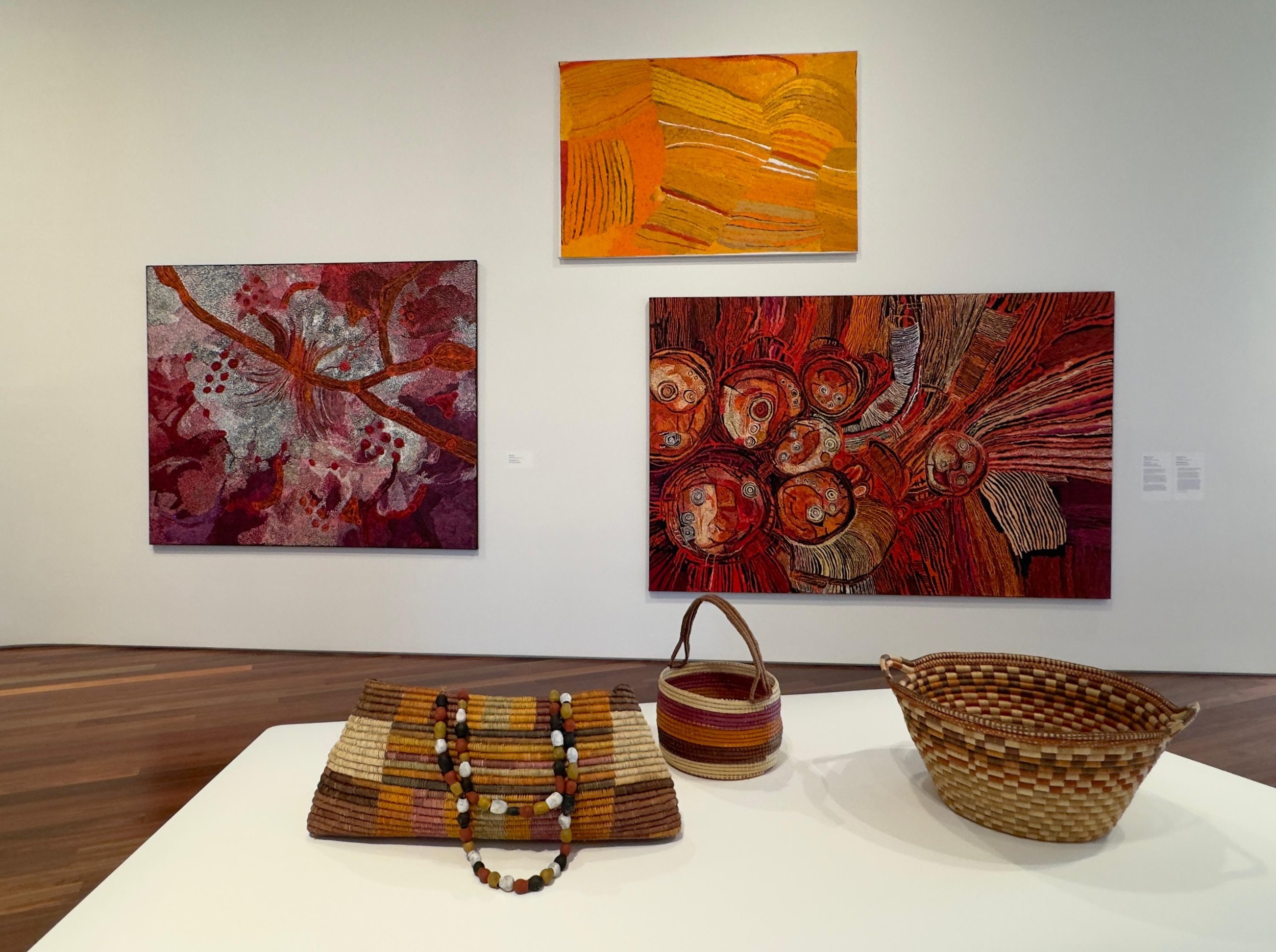Decolonising the Gaze: Indigenous Art as an Act of Belonging and Resistance
I can’t quite tell when it happened, but at some point during the six months I lived in Aotearoa New Zealand, something within me shifted. I stopped simply hearing. I began to listen. Not to the static noise of parliamentary debates, television scrolling, or museum captions — but to the symbols painted on walls, the stories told by the natives, the carved lines that live on skin, living and breathing through tā moko (tattooing). Māori culture isn’t something you simply visit: it surrounds you, it speaks to you, it gently insists that you reconsider the way you position yourself in the world. Above all, it invites a soft dismantling of ego, of assumptions, of the sharp lines we draw around ourselves.
I had travelled to the other side of the world to study, and I returned with something else, a new kind of urgency — a longing, almost a responsibility, to reimagine the way I move through the world. To see and live more holistically. To understand that Art can be a root system, a vessel of memory, a political voice, a way of being. And that stories left untold do not disappear, they persist, and most powerfully, they gently resurface through Art.


I now carry a handful of images that refuse to fade: a hīkoi (march) of Māori moving through concrete streets, their eyes bright with purpose and lit with inherited fire, ancestral symbols tracing their skin like memory made visible. These images are presences that meet your gaze, that see you in return.
In Indigenous contemporary art, particularly across Aotearoa, there is a unique merging of form and intent. Here, art breathes life into political movements; it is the movement, the assertion, the living archive. Worn, danced, painted, and carved — it makes visible what colonisation has tried to make disappear: identity, voice, memory.
Take the tā moko, the sacred practice of Māori tattooing. It’s more than body adornment — it’s autobiography. Each curve, spiral, and notch tells a story of lineage, community, land. The body becomes a bearer of narrative, a canvas for defiance.
Similarly, banners and protest textiles carry complex messages. In the hands of Indigenous creators, they become repositories of cosmology, calls to action, and tools of radical pedagogy. At the Ihumātao occupation site, visual art and protest were indistinguishable: hand-painted signs stood alongside wharenui-inspired installations. Each item was imbued with a voice, not just of resistance, but of reclamation, renewal.
In this context, art is not hung on walls. It walks, it sings, it reclaims stolen space. It’s stitched into daily life, unfurling across time and territory. Through sculpture, performance, street murals, and digital media, Indigenous artists map new cartographies — ones that prioritise kinship over conquest, and land over property.
Photo by Jemmy Suwannaluck
Indigenous contemporary art is declaration, it is assertion, it is creation born from struggle. In colonised lands, artistic practice cannot be separated from history. Every exhibition, every sculpture, every performance emerges from the continuum of dispossession and endurance. The body itself becomes a site of resistance — tattooed, moving, unveiled — while the art becomes protest, memory, prophecy.
Flags raised at Indigenous demonstrations are not simply cultural emblems; they are visual instruments of tino rangatiratanga (self-determination). The language of resistance is visible, in Aotearoa and beyond. The mediums may differ, but the message echoes across continents: We exist. We resist. We create.
And yet, what happens when creation becomes confrontation? When art not only expresses, but undoes? To witness Indigenous contemporary art today is to witness a reclamation of the very act of seeing — a dismantling of the colonial lens and a rebuilding of vision on Indigenous terms.
Displaying Indigenous art in a gallery does not automatically restore its dignity. To do that, we must decolonise the very act of looking. Māori art, for instance, is inseparable from land, lineage, and collective knowledge — it carries presence, relation, breath.


The Western gaze has long framed Indigenous people as static, as footnotes in imperial landscapes. Museums became mausoleums for cultures that are still very much alive, while Art History textbooks praised painters for capturing the “exotic” without ever questioning what or who had been silenced. And yet, for centuries, Western institutions have curated through separation — fragmenting and extracting. They have turned sacred objects into “artefacts,” stripping away cosmology, history, and mana (vital force).
Who decides what is seen? Who holds the right to tell? Decolonising art means restoring agency, reweaving relationships, and renegotiating who speaks and who listens. Hence, Indigenous curatorship has the urgency to restructure and balance the power of representation in cultural spaces.
Indeed, Indigenous contemporary artists are re-writing this visual grammar. They challenge the assumed neutrality of the frame, turning the act of looking into a political act. When we speak of decolonising the gaze, we are not simply asking institutions to diversify their collections. We are speaking of a deeper rupture — of shifting power, perspective, and authorship. What does it mean when the subject becomes the storyteller? When the once marginalised begins to centre themselves on their own terms?
Photo by Felix Lienert
Few works exemplify this shift more powerfully than Lisa Reihana’s in Pursuit of Venus [infected]. Her monumental video installation reclaims and infects history rather than just subverting it. Reihana takes Les Sauvages de la Mer Pacifique, a 19th-century French wallpaper that romanticised the Pacific, and animates it with Indigenous bodies, stories, and agency. The work pulsates with contradictions: beauty and violence, theatre and truth, presence and erasure.
She thereby exposes the mechanisms of mythmaking itself. The panoramic screen moves slowly, luring the viewer into a familiar colonial fantasy, only to disrupt it with sudden gestures of resistance, ritual, or refusal. The camera lingers, not to exoticize, but to invite and to ask us to see with accountability, to witness the past not as spectators but as implicated inheritors.
In reclaiming the frame, Reihana — like many Indigenous artists — asserts that history is not a closed book. It is a living, contested site. The lens, once a tool of control, becomes instead a window into multiplicity, complexity, and survival. And in this act of visual sovereignty, art becomes a re-making of the world. Here, art was not illustrating protest — it was the protest.
Photo by Jemmy Suwannaluck
What struck me most in Aotearoa was how identity, for Māori, is never solitary. You are who you are because you belong — to your whānau (family), your iwi (tribes), your mountain, your river. This relational worldview is mirrored in artistic creation: there is no separation between being, feeling, and making.
Where Western art history often celebrates disconnection — the lone genius, the isolated artwork — Indigenous artistic practice insists on connection. The body is not separate from the land. The protest is not separate from the artwork. Indigenous stories are echoes of the present, flowing vibrant and alive, connecting us to the land, and to the wisdom of generations past.
In a world that fragments, extracts, and commodifies culture, what does it mean to belong? What does it mean to create? Indigenous art offers a radical answer: belonging is not a state, but a practice. It is remembering yourself through connection — not isolation. For many Indigenous artists, belonging is not a fixed location but a relationship: to whenua (land), to whānau, to whakapapa (ancestry). It is carried, enacted, and expressed in every gesture, every stroke, every creation. In this way, art becomes both compass and ceremony, a means of mapping identity across generations, oceans, and wounds.
Living there, I was struck not only by the extraordinary beauty of the land, but by something harder to name — a gentleness, a generosity, a profound sense of interconnection. Māori Art felt like an invitation. A gesture of trust. A reminder that the world is not made of separate parts, but of sacred relationships.
Photo by Felix Lienert




